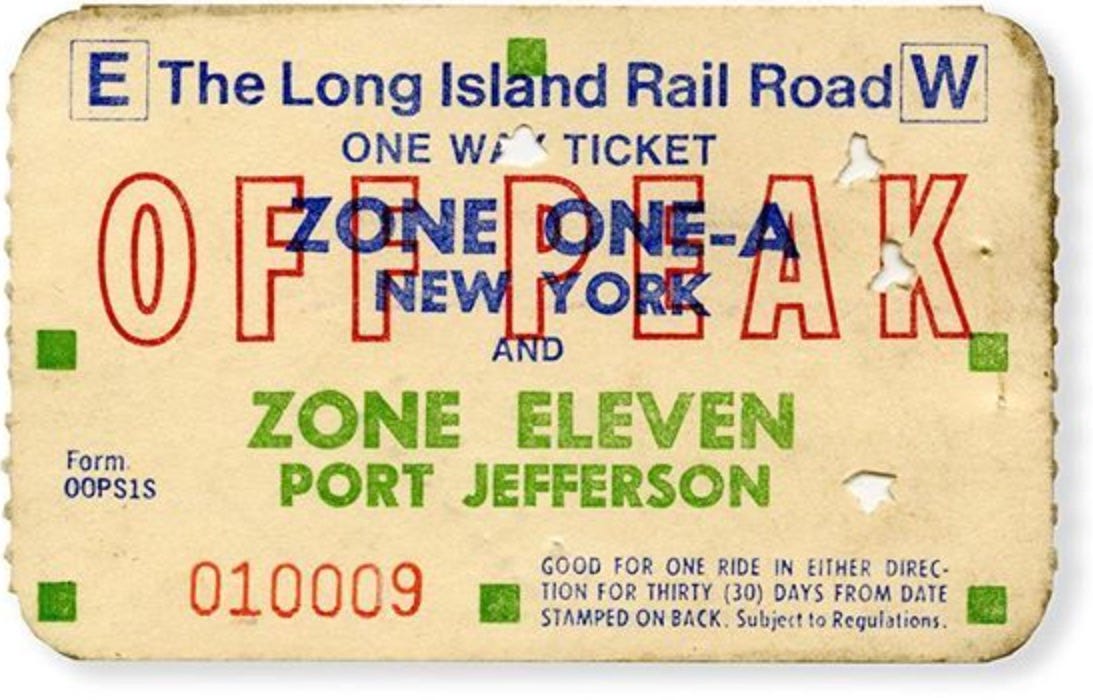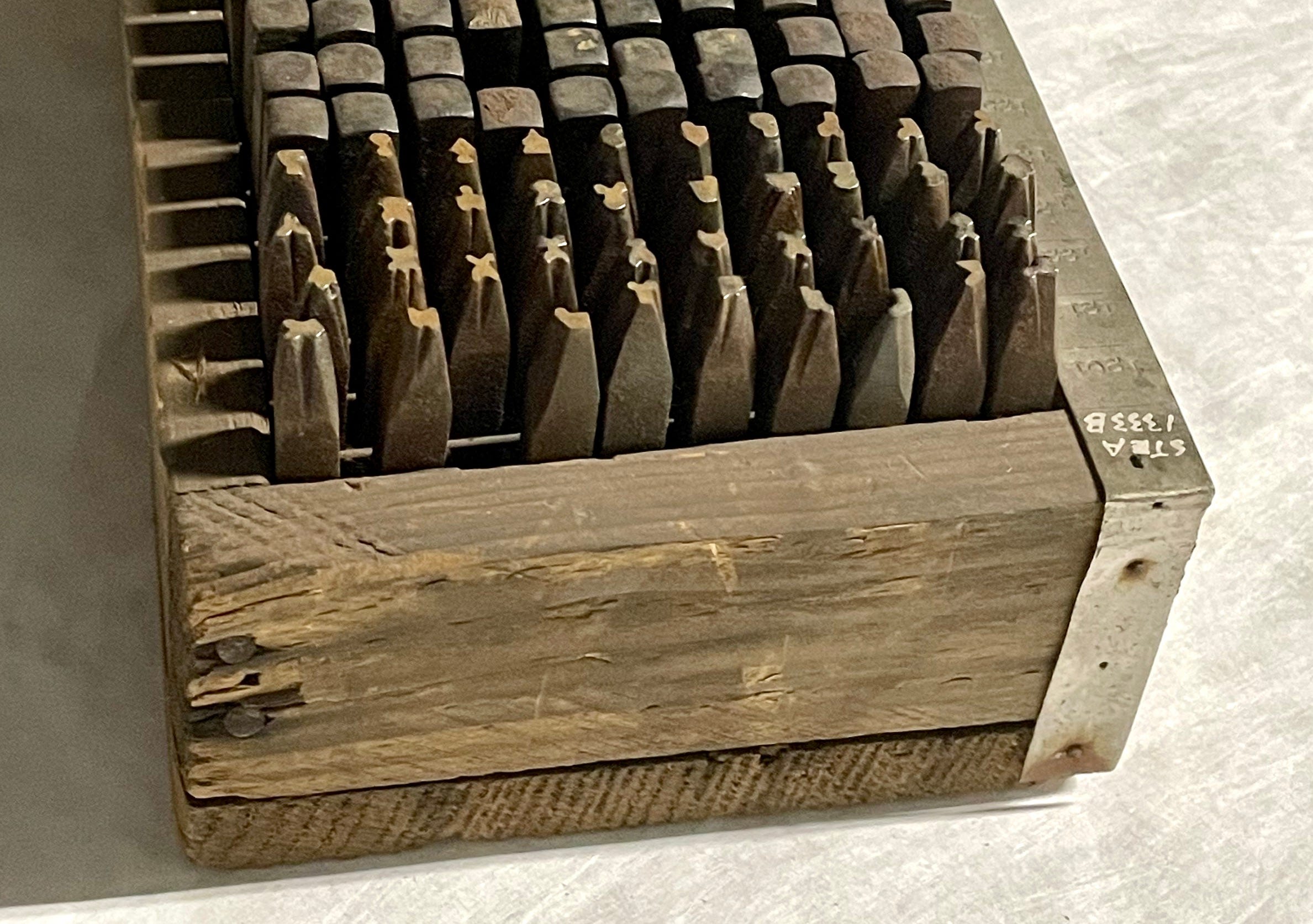A Close Look at Ticket-Punch Shapes
A teeny-tiny design niche with a near-endless range of possibilities. Plus a new Inconspicuous News Roundup, and more.
I grew up in the Long Island suburbs. Around the time I was 13 or 14, I began taking the Long Island Rail Road by myself to New York City, where I’d walk around, go to bookstores, maybe meet up with one of my older brothers, or attend some sort of event.
My train tickets for these trips, purchased from a clerk who worked in a booth at our local station, looked very much like the one shown above (although I was usually departing from Patchogue, not Port Jefferson). Soon after I boarded the train and settled in for the ride, a uniformed conductor would come by, saying, “Tickets! Tickets, please.” On his belt would be a holster, and in the holster would be a nickel-plated ticket-punch device, which he’d brandish with an air of casual authority. I’d hand him my ticket, he’d punch it (I can still hear the light-industrial “Click!” sound this would produce), and then he’d hand it back. I’d usually have to transfer to another train at some point in the journey, so the ticket-punch routine would then be repeated with another conductor.
I quickly noticed that the punches in my ticket were never circular holes. Instead, they were abstract squiggles like the ones in the ticket shown above. I’d study these tiny glyphs while sitting in my train seat, trying to discern if there was any rhyme or reason to them. On some trips, each conductor seemed to have his own shape; on others, the same shape would be used by two different conductors. I assumed there was some sort of system to it, but I could never figure out what it was, and I was too shy to ask the conductors about it.
I mention all of this because a friend recently directed my attention to a Facebook post featuring this page from a 1905 British “railway ticket and apparatus catalogue”:
Oh man, how satisfying is that? I love seeing all the available shapes, especially the ones that are asymmetrical. (Also, I’d never heard of a punch device referred to as a nipper, but it seems quintessentially British.)
Naturally, I wanted to know more. I quickly learned that handheld punch devices were invented in the late 1800s. The part that punches through the paper is the die. So if that 1905 catalogue showed 33 different “cuts,” it really means that the manufacturer offered 33 different dies.
According to this Instagram post from Steamtown National Historic Site in Scranton, Pennsylvania, the idea was that each conductor could have his own distinct die shape:
Each conductor was assigned a unique design, such as hearts, spades, diamonds, clubs, semi-circles, stars, letters, triangles, and so on. The designs were limited only by the die-cutter’s and punch-maker’s art. Each punch was exclusive to the conductor it was given [to] and registered. Some passed their punches on to successors after retirement.
The idea of each conductor having his own die design is nicely illustrated by this 60-ride ticket from 1947, which features a wide array of punch shapes:
Although many train tickets are now electronic, ticket punches (or nippers) are still being made and used. And it turns out that 33 die shapes, as offered in that 1905 British catalog, barely scratches the surface of what’s available nowadays. A California company called Hitt Marking Devices currently offers — get this — a whopping 1,645 shapes! Wondering how there could possibly be that many die options? Wonder no more:






